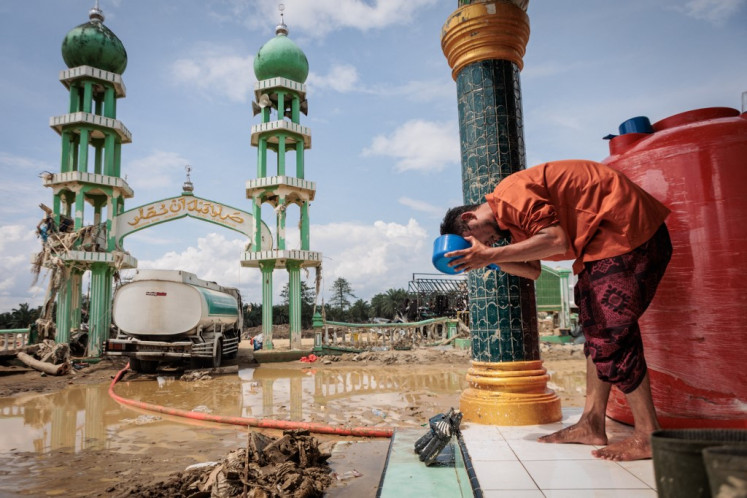Popular Reads
Top Results
Can't find what you're looking for?
View all search resultsPopular Reads
Top Results
Can't find what you're looking for?
View all search resultsRiau remains on alert as sky gets clearer
The Riau Haze Task Force claimed on Friday that the land and aerial fire-fighting operation had begun showing positive results
Change text size
Gift Premium Articles
to Anyone
T
he Riau Haze Task Force claimed on Friday that the land and aerial fire-fighting operation had begun showing positive results.
Task force commander Brig. Gen. Teguh Rahardjo said the success was measured by the reduction in the number of hot spots, improving air quality indexes and improved visibility at the worst-hit haze locations.
Speaking at the Roesmin Nurjadin Air Base, Teguh said air quality indexes in a number of cities had also dropped and shown further reduction in airborne pollutants. In Dumai, the air quality index, which reached 688 pollutant standards index (PSI) previously, dropped to 236 PSI on Thursday.
In Duri, Bengkalis regency, the index, which exceeded 1,000 PSI on June 20, has since dropped to 149 PSI.
'Visibility in Dumai, which was less than 100 meters on June 20, has gradually improved to 900 meters and the farthest at 10 kilometers,' said Teguh.
Despite the improving situation, he added that the fire-fighting operation was still ongoing. Besides deploying three helicopters for water bombing and surveillance missions, the National Disaster Mitigation Agency (BNPB) and the Technology Application and Assessment Agency (BPPT) have continued cloud seeding by making two sorties over Kuantan Singingi, Indragiri Hulu, Siak and Bengkalis regencies.
On Friday, however, there were six hot spots compared to Thursday's two.
Riau Forestry Agency head Zulkifli Yusuf said the razed area in Riau had reached more than 16,000 hectares since June 1.
The worst condition was reported in Rokan Hilir and Bengkalis at 6,195 hectares and 6,300 hectares, respectively.
'This is just temporary data that is still being updated by the forestry agency, Natural Resources and Conservation Center and the Riau Disaster Mitigation Agency,' said Zulkifli.
He declined to elaborate on whether the razed areas were state-owned land, production forests, former forest concession areas or oil palm plantations.
He only mentioned that 502 hot spots detected in Riau since June 1 were located in non-forest areas, while 993 other hot spots were in forested areas, including 114 detected in conservation areas such as protected forests and natural preserves.










